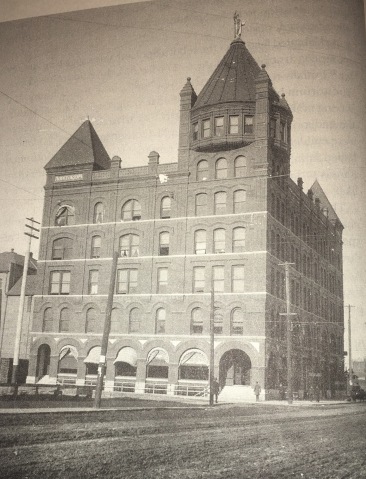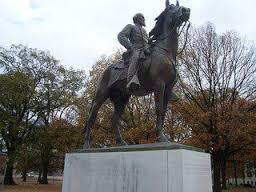The introduction and first chapter of “Show Town: Theater and Culture in the Pacific

Northwest 1890-1920” by Holly George tells the story of early Spokane through its culture, specifically the fine arts and theater. Theater was important to the early residents of Spokane as they tried to rival themselves against other towns in the region and become most like the larger metropolis’ to the East like Chicago. Theater was one way that Spokane could make itself seem more sophisticated and elegant, less uncivilized and barbaric. Theater allowed “Spokane [to] fit a certain cultural order, that this rough new town belonged to the white, educated, and respectable world of mainstream America.” (20) The chapter touches on the fact that even though Spokane residents acted like theater and the fine arts were important to them, they really didn’t appreciate them. We learned about some of the earlier shows that were played in Spokane and about the places they were performed at as “the Auditorium became a symbol of civic progress and social status.” (23) It seems that during this time in the city it was all about seeming like you were part of the up and coming even if you really weren’t.
We also listened to a podcast about what should go in place of a statue being removed in Memphis of Nathan Bedford Forrest.

Should a plaque go in its place? What should it look like, and what should it be made of? The speaker claims that “memorials aren’t memories” they are put there after the fact, when they are needed most, for whatever reason. This particular statue was put up to make Memphis Memphis again after it had lost its way. Statues and other memorials are usually put up without the whole story of the person or event being told or even known. This podcast reflected the “Show Town” reading, people putting up a front, trying to look the best to the outside world, without really telling the true story or know what a concept is really about.
Disturbingly, this week, it became all too clear how easily the past can be re-written and told wrong. In the blog post “Historian Forges the Past, Perhaps Permanently” we are told the story of how Thomas Lowry forged a document in the National Archives. This document was a presidential pardon from Abraham Lincoln. Lowry forged it to say that he gave his pardon, releasing a Union soldier, the very day he was assassinated, making it one of, if not, the last official acts he gave before his death. The real pardon was from one year earlier. The truth has come out, the story corrected, and in the future, it will not be used as an academic resource, however, that doesn’t account for all of the people who have heard the story or read the books that it was published in. The false information is out in the world and who knows when it will ever go away.
The other blog post from this week, “The Long Lingering Death of the Google Newspaper Archive,” explains the misfortune of when a historian is given a wonderful resource and then it is taken away from their possession. Short explanation is how the Google Newspaper Archive had allowed researchers to search for specific names, dates, or keywords within newspapers from over the years. This feature disappeared all of a sudden last fall with no explanation as to why. Perhaps people like Thomas Lowry will become frustrated by this and commit a similar crime, forging and falsifying documents to create a more interesting story. Beware of your resources and don’t fake stories!
On another note, this week we also read the next two chapters of “Nearby History.” Chapter 4 talks about just exactly what the blogs had, documents, and how “historians do not passively read documents, we interrogate them like a detective grilling a criminal suspect.” (2) This chapter, like the previous one, also asked the reader lots of questions. Which, again, was fine for its purpose. What I liked about this chapter though, was that it talked about where a researcher could find documents and resources to use, ranging from online sources to print books. I also liked the fact that it was broken up into subsections like one of the previous chapters had been as well. It’s nice to see that this part will be about books and another part will be about online resources and so on. Chapter 5 was really similar to chapter 4. It too was about documents, however it was about unpublished documents that can be used for research like birth certificates, diaries, and the census. This section is really useful because not many people think about these types of documents and the places they can be found (which is sometimes very tricky), especially for research, I certainly would not have before taking a Public History course. Again, the layout of this chapter is appealing just as chapter 4 was.
I thought the Google Newspaper Archive story was strange. Not the post about the story, but just how that project died so suddenly. It seems like a lot of internet projects get axed because they don’t work well, or because they haven’t been updated to keep up with the evolving software technology. Everyone that I know that has used it talks about just how great of a resource was and how well that it worked. It really is strange that Google didn’t sell the technology off to someone else who might have wanted to continue support for it.
LikeLiked by 1 person
Totally agree!!
LikeLike